By Dan Weisz
I have the privilege of birding at the Sewailo Golf Course monthly. Sewailo is on the Pascua Yaqui Reservation. Designed by Native American former PGA Tour professional Notah Begay III, Sewailo means “Flower World” in the Pascua Yaqui language. The native landscape blends with the lakes and streams of this course and provides a rich environment for birds. My friends and I take a “bird inventory” monthly to share with the golf course management.
Golf courses in the desert southwest close for several weeks each autumn for ‘overseeding’. Because Bermuda grass goes dormant in the winter and loses its color, golf courses use some type of cool season grass like ryegrass, to provide color through the winter. With the course closed, we have the opportunity to bird the entire course without worrying about golfers and we are able to take our time and investigate all ‘corners’ of the course. Here are some photos I took over three trips to Seawilo last month.
A Great Egret migrating through stopped for a bit. As we watched it, it took off, flew around a lake and finally settled at the very tip top of a dead tree.
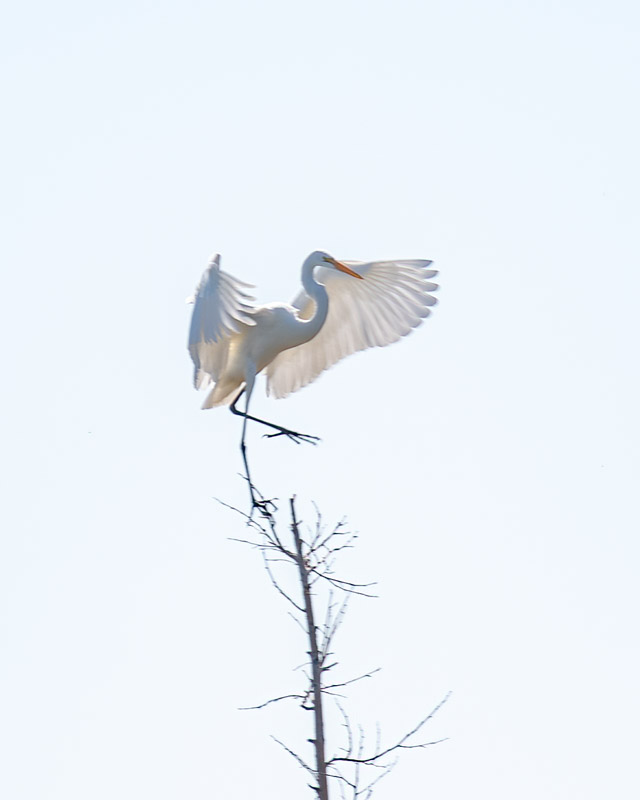
A surprise bird for us was this adult Gray Hawk. By September, most of the Gray Hawks in Arizona have returned south for the winter. Plus, Gray Hawks are most often found in thick riparian areas and low mountain canyons. What this bird was doing at Sewailo was a mystery, but it was an exciting find.
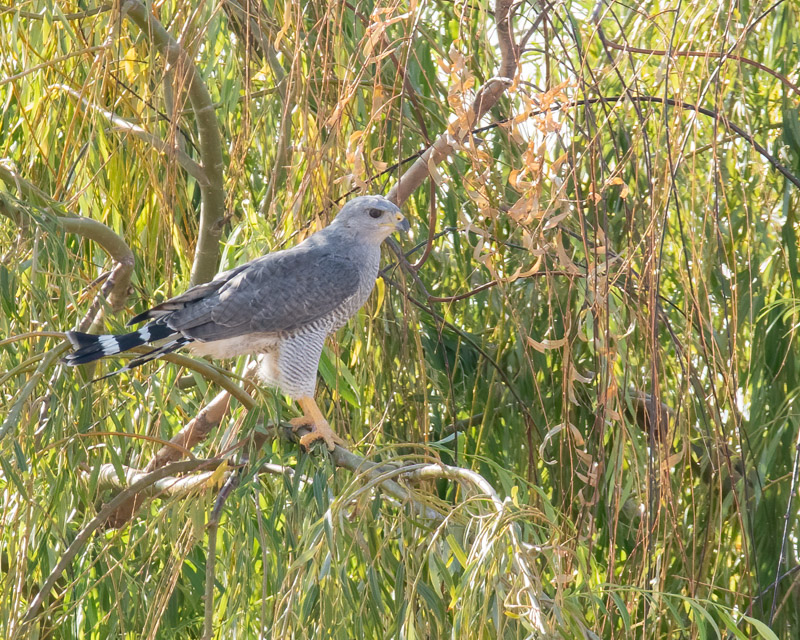
Red-tailed hawks are regular at Sewailo (which is located on the far southwest side of Tucson). This is an immature red-tail as you can tell by its “not-red” tail. Immature Red-tails sport this lightly barred pale tail. The dark feathers on the leading edge of the hawk’s wings are a tell-tale sign of a Red-tailed Hawk. That is called its Patagial Mark, and it runs from the bird’s shoulder to its wrist. (By the way, if you use an Apple device, your mail icon might be a stamp with a picture of a red-tailed hawk on it!)
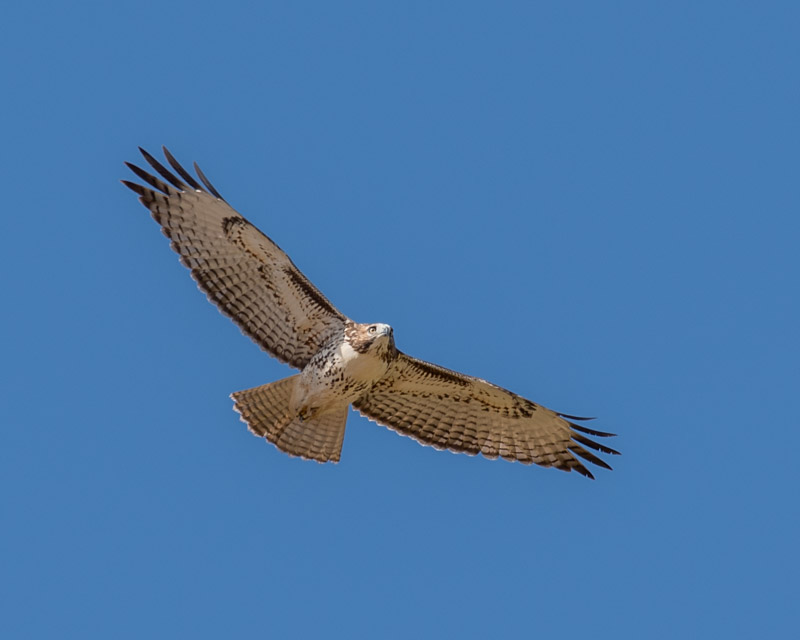
Killdeer are shorebirds you can see without having to go to the beach. They are found throughout the country at golf courses, athletic fields, lawns, etc. This killdeer flew across a lake, its wings almost touching the surface of the lake. To hear killdeer and learn about some interesting behavior of theirs, listen to Birdnote: https://www.birdnote.org/listen/shows/killdeer-master-distraction
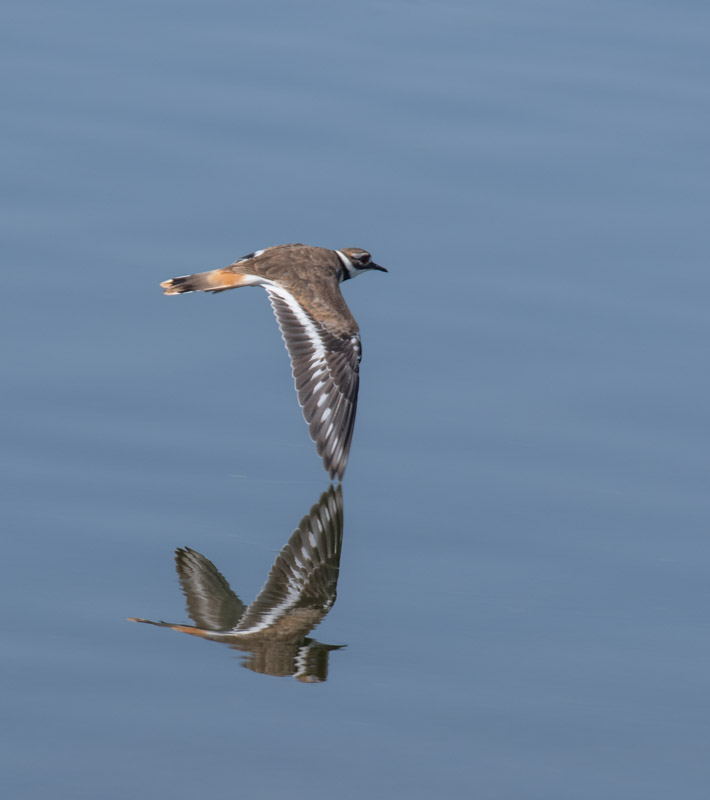
Another common shorebird at Sewailo is the Spotted Sandpiper. Its spots are part of its breeding plumage and we only see these birds at Sewailo out of breeding season so there are no spots on this bird’s belly. Spotted Sandpipers are found across America along shorelines of lakes, rivers and streams.
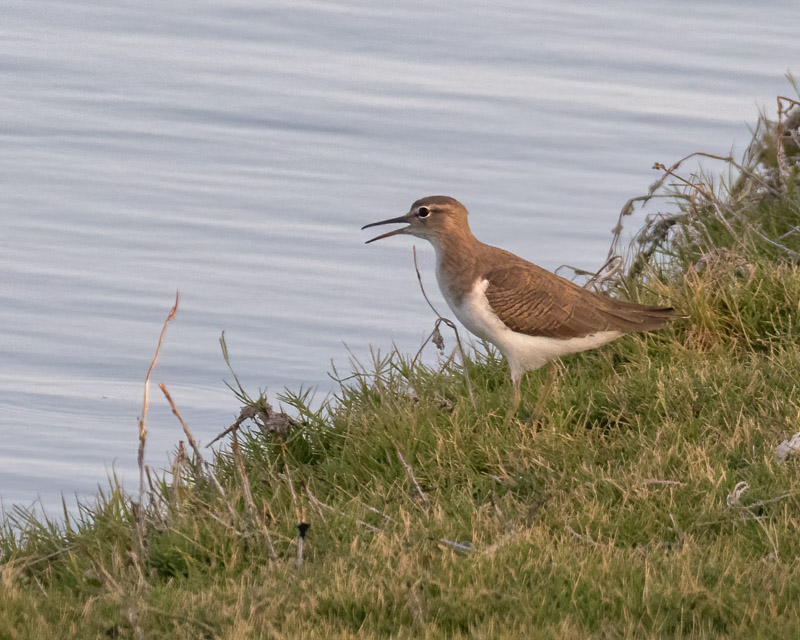
Pied-billed Grebes are another waterbird that is common across America. They build their nests in tall vegetation, in this case on the stems of the reeds. As we walked along this creek, the Pied-billed Grebe swam from the open water to behind its nest. It watched us warily from behind the reeds to make sure we were not a danger to its lone egg.
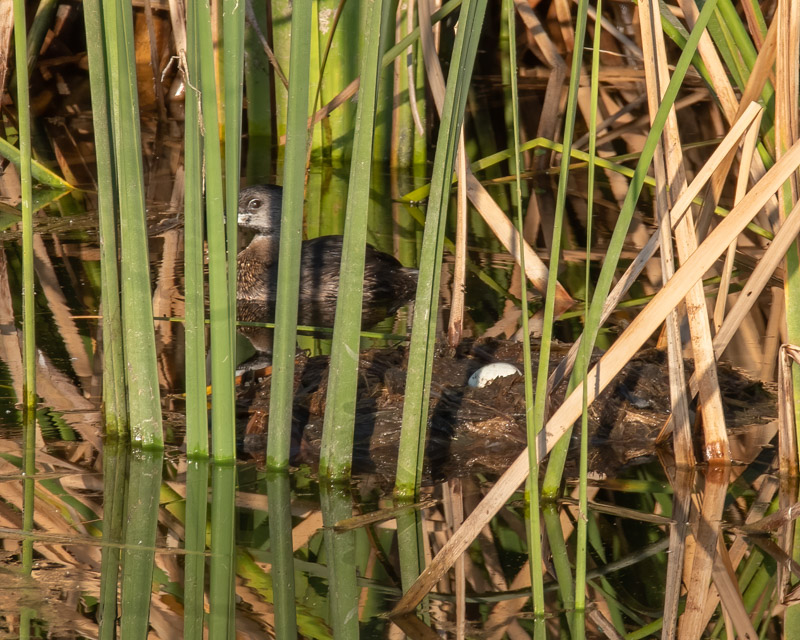
Vermilion Flycatchers are common sights along any Tucson or Foothills area field, golf courses included. This is a young male Vermilion hunting from the top of a low mesquite tree.
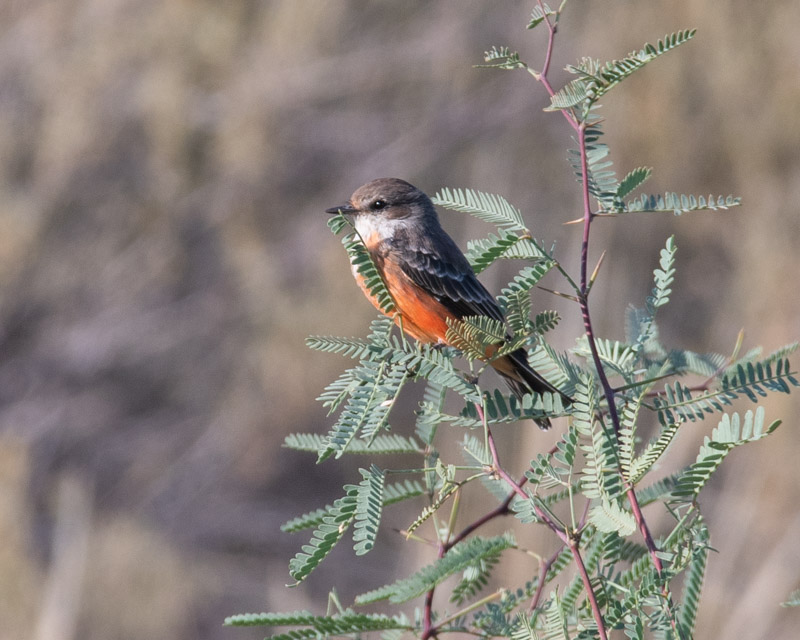
A large waterfall is the backdrop for the 18th green. This is where we found the Great Egret in the first photo.
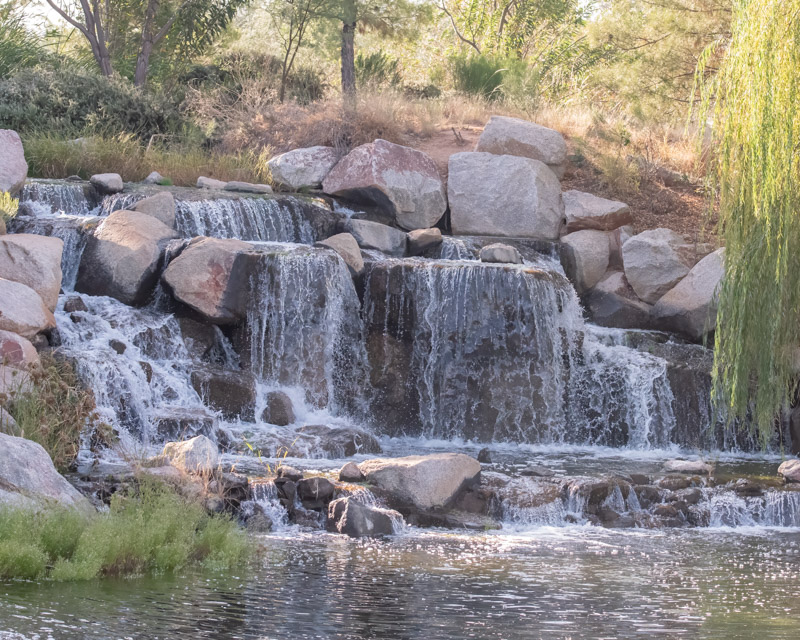
There are American Kestrels year-round in southern Arizona but many more migrate south to our area for the winter. At Sewailo, a pair of Kestrels have claimed this territory year after year. Here is a female on a post, looking like she chose an outfit to match the Autumn colors behind her. Female Kestrels are rusty overall and have a gray crown.
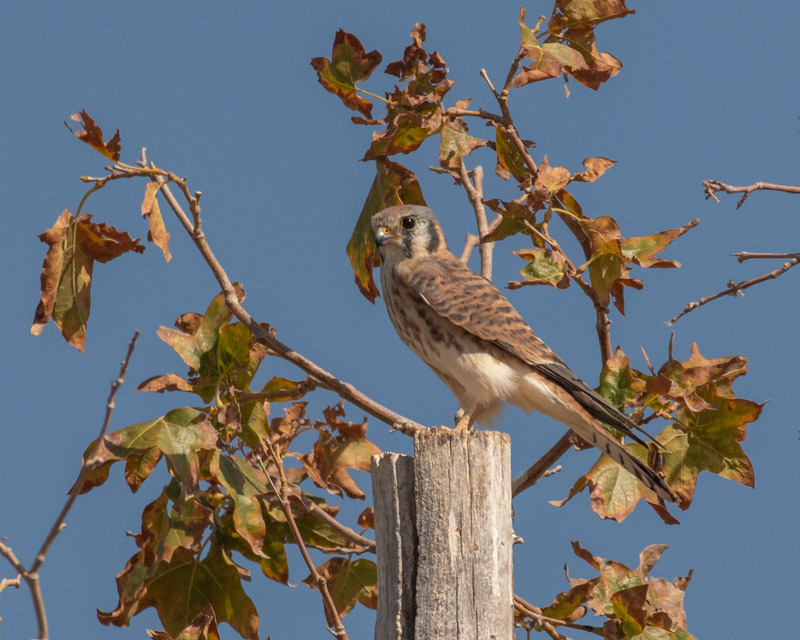
She flew to the top of a nearby tree. Kestrels often have regular hunting posts in their territory where they sit and wait, surveying the landscape for prey.
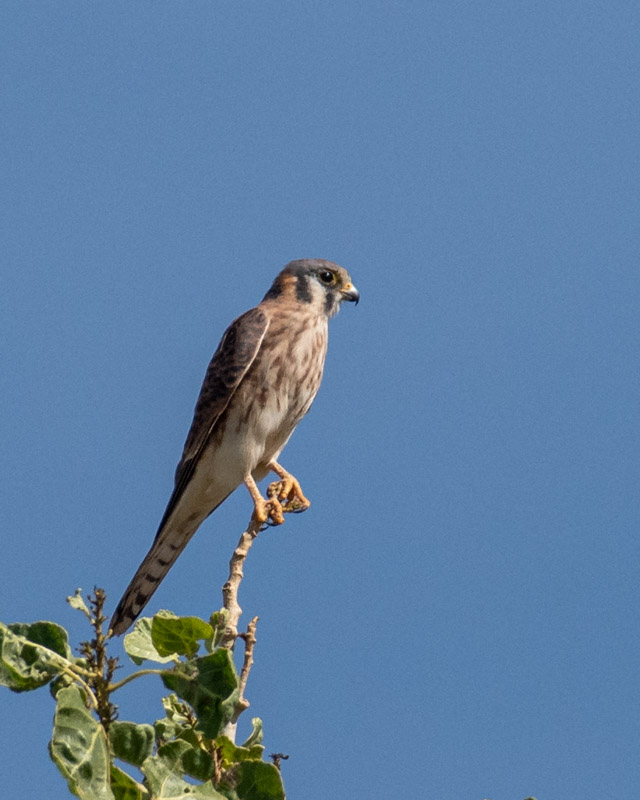
Walking along the course we saw a large number of honeycombs scattered on the ground. How they got there remains a mystery.
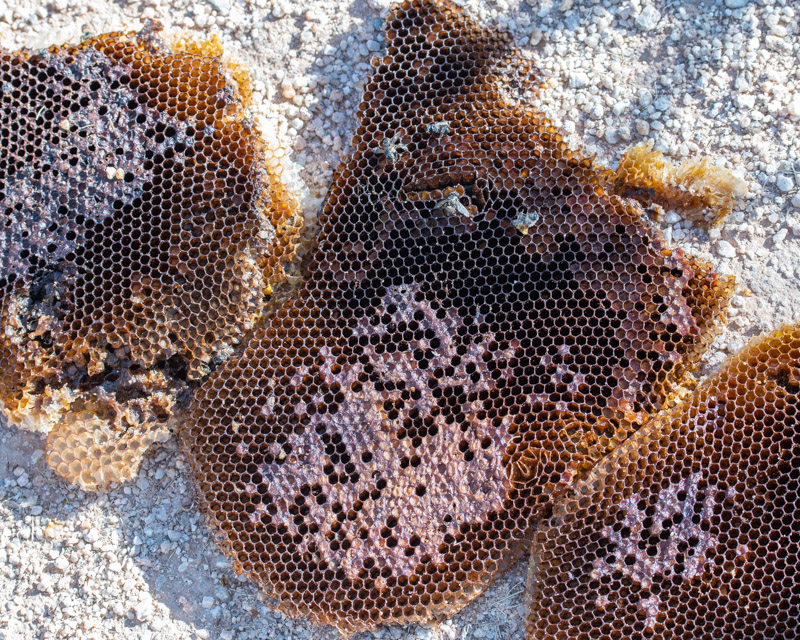
We see Green Herons along the water regularly. Green Herons are uncommon year-round residents of southern Arizona. They usually remain at the water’s edge and often hidden from view. This Green Heron didn’t care for our presence as we walked by its pond and it flew to the top of a nearby tree and stretched its neck as far as possible to look over the entire course. The Green Heron was backlit in the morning sun giving a glow to this picture.
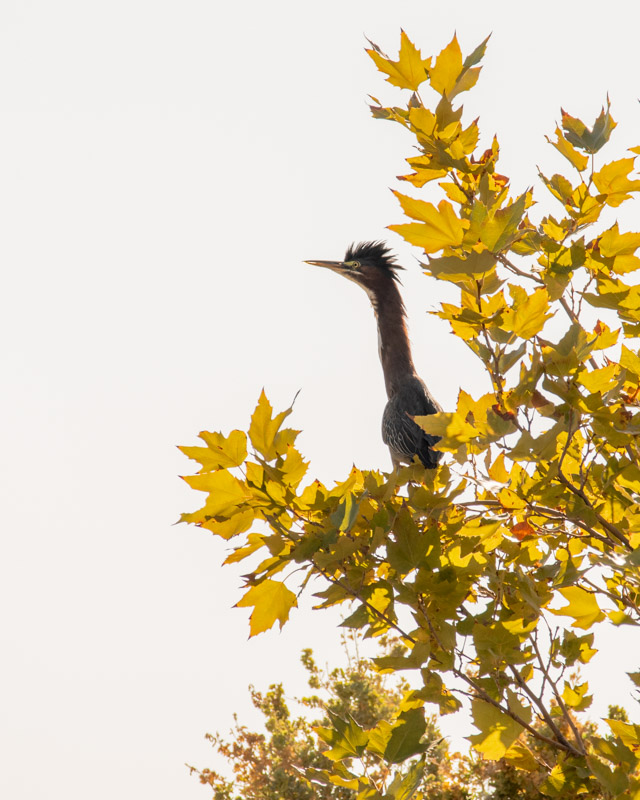
For a short natural history lesson on Green Herons, Birdnote is always a great resource: https://www.birdnote.org/listen/shows/green-heron
I didn’t play a Round of Golf. But I did play Around a Golf Course. I do enjoy my time at Sewailo.
